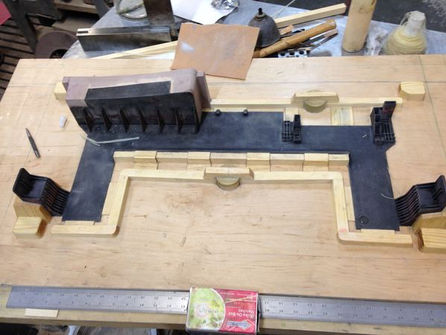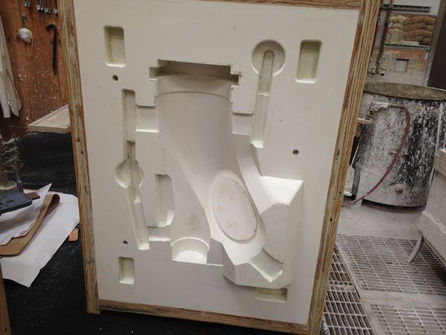Plaster Mold Casting

What is Plaster Mold Casting?
Plaster mold casting is a metalworking process similar to sand casting, except that the mold material is plaster instead of sand. Like sand casting, plaster mold casting is an expendable mold process — however, it can only be used with non-ferrous materials. Plaster mold castings can range from 1 ounce to as large as 20-25 pounds.
Plaster mold casting is often used to prototype parts that will end up as die castings in production. Plaster mold castings offer similar characteristics as die castings, such as smooth surface finish, thin walls, and complex geometries.
How Does Plaster Mold Casting Work?
Compared to other low-volume casting processes, plaster mold castings provide thin walls, finer surface finish, and crisper features. Plaster mold casting occurs in seven steps:
Create master negatives.
Pour rubber against master negatives and core boxes to create rubber positives.
Pour plaster slurry against rubber positives and core boxes.
Plaster solidifies, creating plaster mold halves and cores.
Bake molds and cores overnight.
Pin molds together and pour molten metal into the cavity.
Shake out part from plaster molds.
Castings from the plaster mold process will have similar characteristics to die castings:
63 RMS surface finish
Walls as thin as 0.080 inches
Complex and deep draw geometries
Additionally, plaster mold castings offer even higher design freedom than die casting. Hollow features and undercuts, which could not be achieved in die casting, can be formed using plaster cores.


Advantages of Plaster Mold Casting
The plaster mold process is ideal for castings with fine features and prototype or low-volume production quantities. Other benefits of plaster mold casting include:
Tighter as-cast tolerances compared to sand casting
Minimal post-machining and other secondary operations required
Smoother surface finish and crisper feature definitions
More design freedom and looser draft requirements
Plaster Mold Casting Materials
Plaster mold casting can only be used for non-ferrous metals with lower melting temperatures, such as:
Aluminum
Magnesium
Zinc
Copper (select alloys)

Plaster Mold Casting Applications
Plaster mold casting is used in a wide range of industries and products. Some examples include:
Defense: Firearms, communications equipment, vehicles, mobility systems, avionics
Industrial: Bearing housings, compressors, pumps, heatsinks, handheld enclosures
Medical: Pumps, centrifuges, surgical robots, monitors, operating instruments, hospital beds
Technology: RF filters, antenna mounts, front face plates, rugged housings, light fixtures, end caps, heatsinks
Transportation: Cylinders, chassis, decorative parts, EV battery housings
.png)































